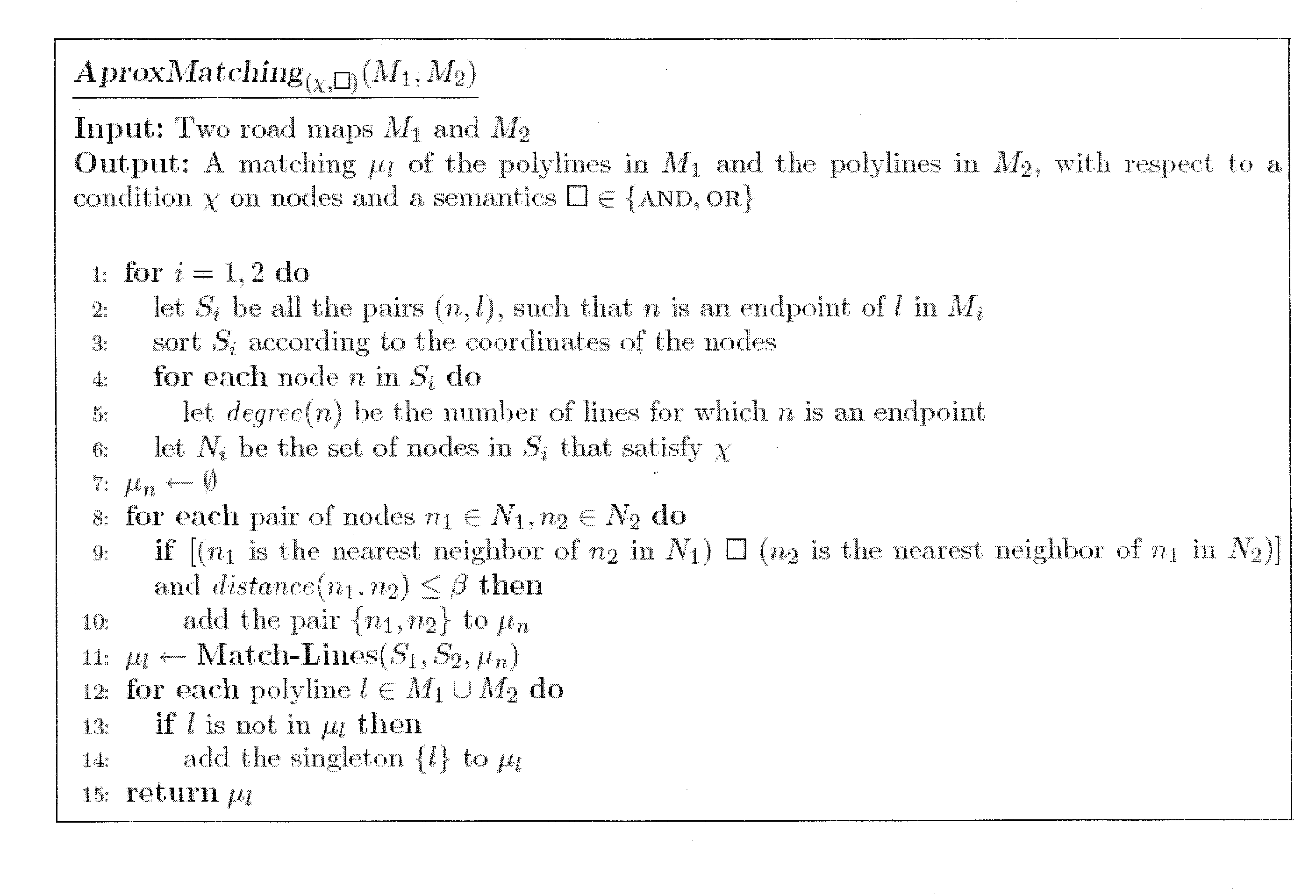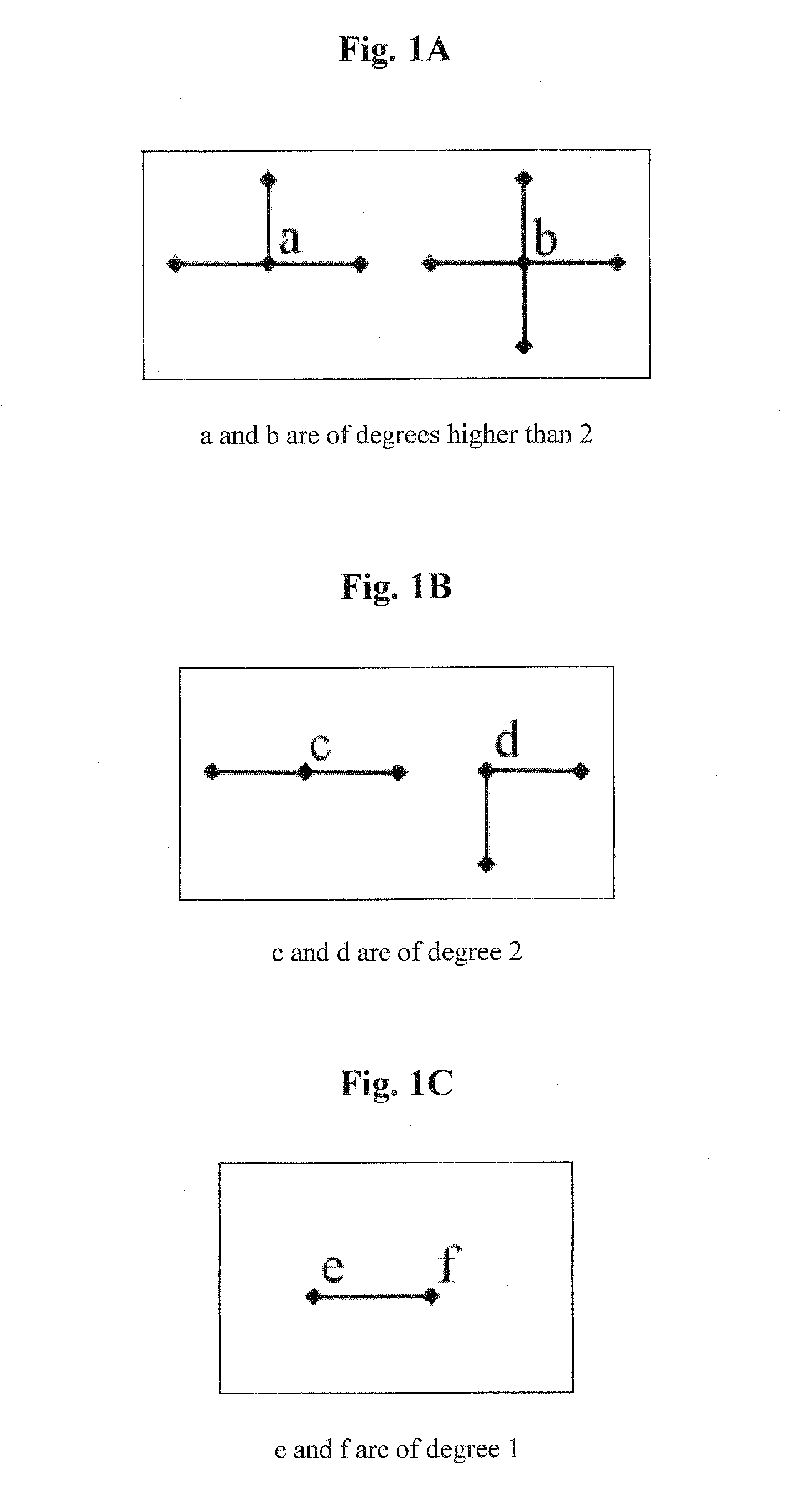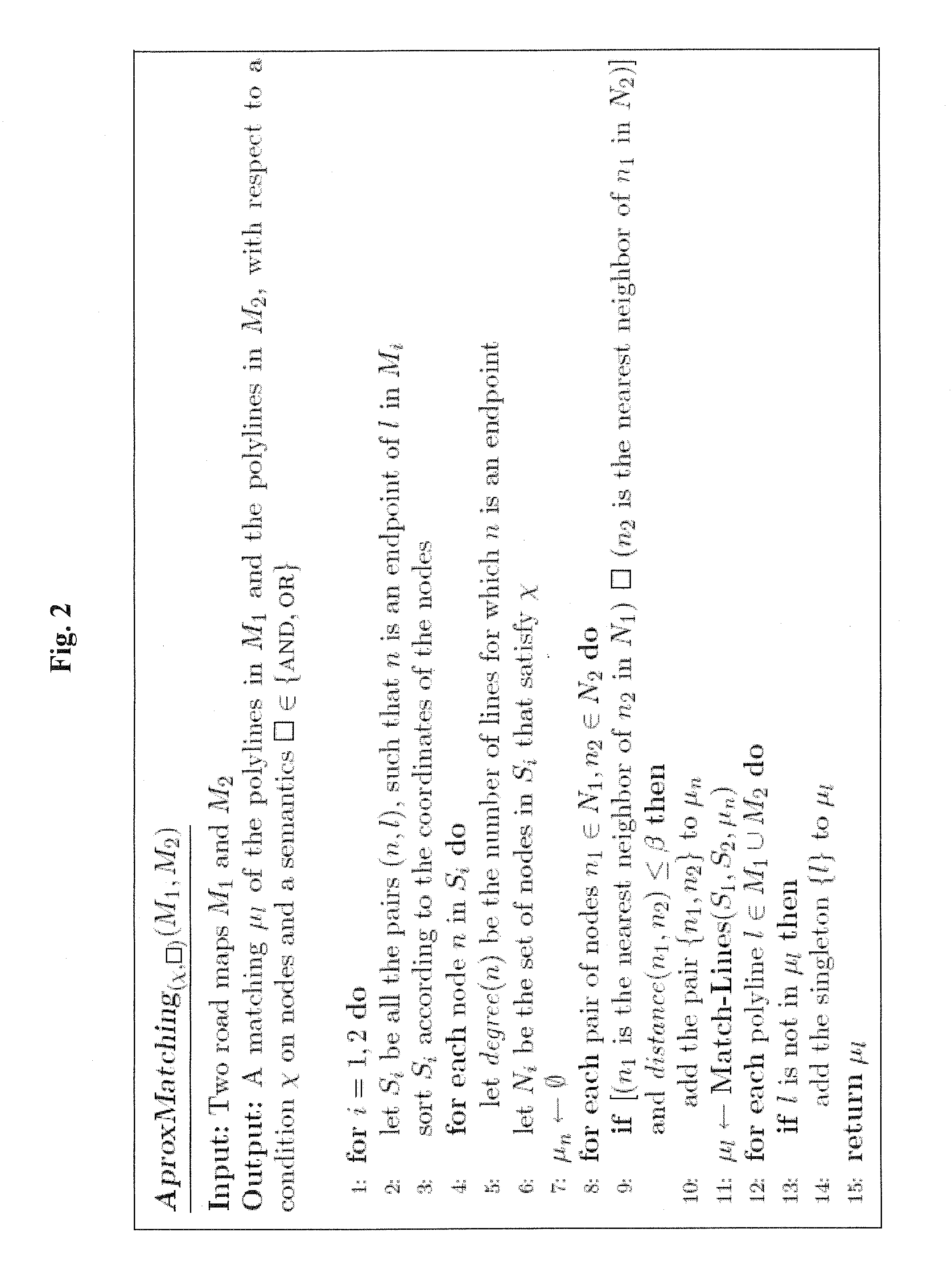Efficient integration of road maps
- Summary
- Abstract
- Description
- Claims
- Application Information
AI Technical Summary
Benefits of technology
Problems solved by technology
Method used
Image
Examples
Embodiment Construction
[0062]In the following detailed description of various embodiments, reference is made to the accompanying drawings that form a part thereof, and in which are shown by way of illustration specific embodiments in which the invention may be practiced. It is understood that other embodiments may be utilized and structural changes may be made without departing from the scope of the present invention.
2. Framework
[0063]In this section we present our framework. We provide formal definitions to the notion of a road map in a geo-spatial database. Also, we discuss the notation of a matching algorithm and we describe the result of such an algorithm.
2.1 Road Map
[0064]A road map represents a network of real-world roads, using nodes and edges. The nodes (also called topological nodes) are either intersections, where two or more roads meet, or road ends where roads terminate without intersecting another road. The edges are road objects. Note that under this interpretation, a road may start or end a...
PUM
 Login to View More
Login to View More Abstract
Description
Claims
Application Information
 Login to View More
Login to View More - R&D
- Intellectual Property
- Life Sciences
- Materials
- Tech Scout
- Unparalleled Data Quality
- Higher Quality Content
- 60% Fewer Hallucinations
Browse by: Latest US Patents, China's latest patents, Technical Efficacy Thesaurus, Application Domain, Technology Topic, Popular Technical Reports.
© 2025 PatSnap. All rights reserved.Legal|Privacy policy|Modern Slavery Act Transparency Statement|Sitemap|About US| Contact US: help@patsnap.com



